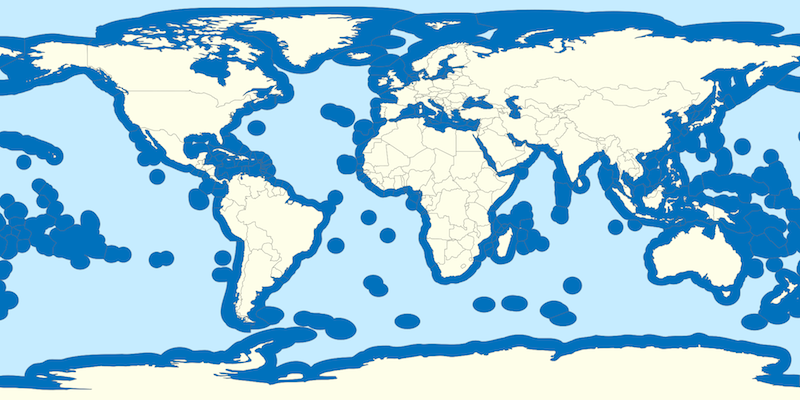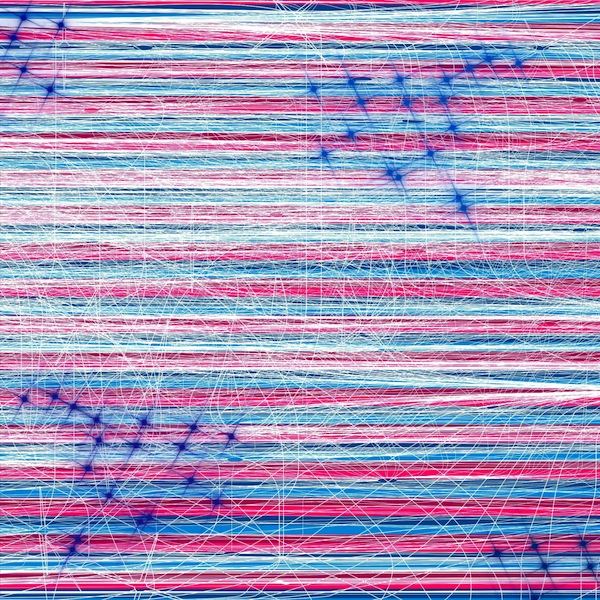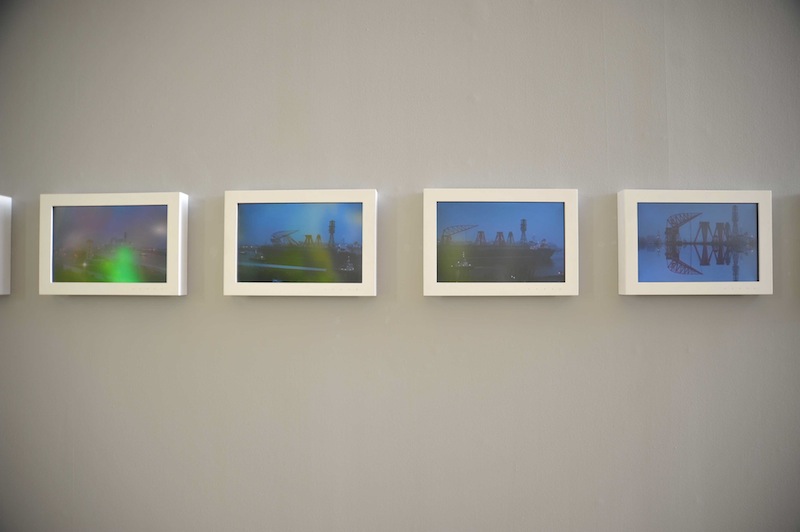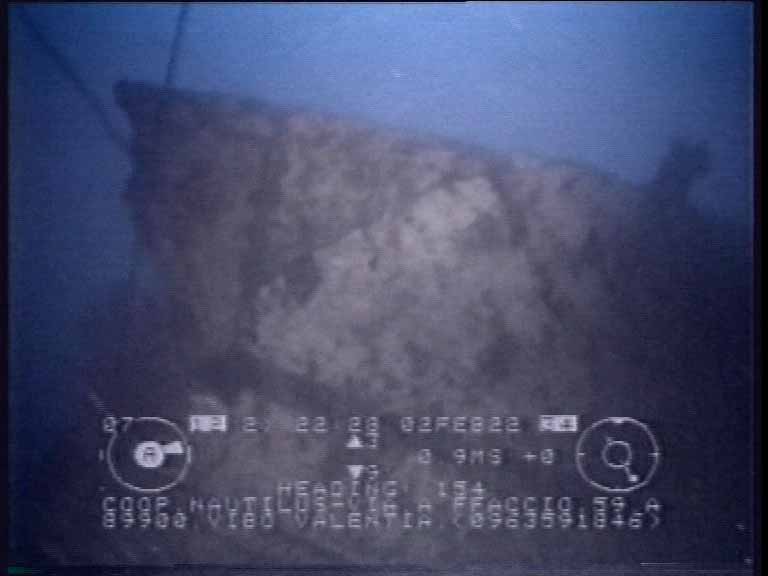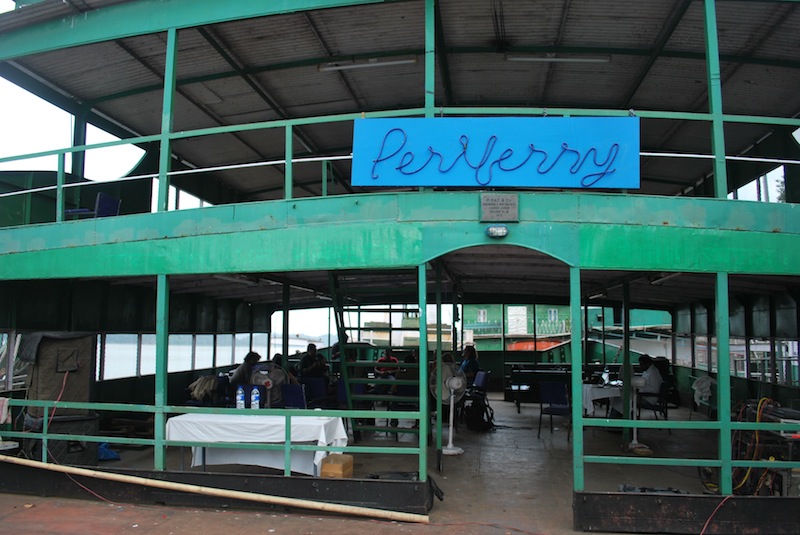The challenge of talking about the past in its general totality has been two-fold. First, there is an assumption that history is a single, grand, linear idea of time that needs to be peeled away layer by layer, filled gap by gap, all the while maintaining objectivity intact. Second is the belief that the chronology of cultural practice and its associated social contexts help us in contributing to the larger conception of history. Such engagements with the past more often overshadow and appropriate the multiplicities of cultural processes that exist in and belong to different, even contrasting, registers of time and space.
The hesitation to recognise the varied lives of practices by dominant historicist narratives results in the stitched incisions, smoothened interruptions and cemented seepages of those sites that hold the potential to question the most fundamental premises of art history and its dominant teleological approach. The teleological approach, and its ideas of time, proves to be inadequate while dealing with the bmessinessb of the contemporary, [1] where time is simultaneously folded like a paper boat and a paper rocket, and thrown into the vastness of the sea and sky to inhabit the multiple registers of its flows.
Within the crisis of contemporaneity, where and how does one locate the digital? Does one look at it as a process or as a medium? Or as the various micro-registers of capitalbs fluid re-organisation, produced by dispersed financial markets that ride largely on digital networks, playing on their speed? Yet their porosity, leakages, breakdowns, crashes, reversals remind the world that it is running through, and is manned by, the chaotic medium that is the digital. Further, the digital is also the space of a vast production of contemporary capitalism, where shutdowns, bankruptcies, injunctions and even class struggles are operative.[2] However, there is some difficulty in strictly locating the digital in any specifically defined singularity; instead it can conceptually be taken as a constellation of forces, mediums and processes with varied levels of intensities and inconsistencies.
The massive expansion across geographic locations, cultural processes and curatorial imaginations complicates the logic of conceptualising the practices of contemporary as territorially defined. In other words, the landscapes of contemporary cultures increasingly mobilised by the digital need a different historical attitude, one that thinks beyond the dominant totalising categories of the nation-state. These existing historical framings seem to be inadequate, especially for their aspirations to build homogeneities of artistic imagination and perceive the varied inhabitations of contemporary practices as part of singular territorial identity. As a methodological response, I would like to propose a curatorial approach towards history, where the past and the present, and the past in the present, can be seen in their multiple co-existences and co-inhabitations in shifting temporalities and territorialities through the fields of cultural practice. In other words, I propose here an idea of curatorial assemblage that brings together the metaphors of ships, seas, solids, liquids, impostors, missing persons to speak through the multiple dimensions of the digital and vis-à-vis capital, postulated for us by some artistic practitioners. .
Fluid Extensions
Sociologist Zygmunt Bauman proposed the idea of "liquid modernity"[3] as a response to the altered dynamics of capital and power circulations after the global expansion fuelled predominantly by developments in cultures of communication. In this era, a new type of war persists, not the one which conquers a new territory, but the one that crushes and dissolves the walls and boundaries that come in the way of newly dispersing liquid flows of capital and power. As Bauman observes, bfor power to be free to flow, the world must be free of fences, barriers, fortified borders and checkpoints. Any dense and tight network of social bonds, and particularly a territorially rooted tight network, is an obstacle to be cleared out of the wayb.[4]B According to him, the restlessness and openness inherent to liquidity as such cannot but create greater inequality and more social and economic polarisation. These inequalities shall be generated by the increasing rise of a fluid global elite and the dispersed institutional structures of control that together constitute a programme of disenfranchisement of the poor and other marginal people in the name of their welfare and re-organisation.[5] .
Territorial waters of the world, Wikimedia Commons, October 2011. .
Drawing on Baumanbs postulations, I invoke here a metaphor of territorial waters to speak of digital technologies that indeed acted as major instrumental forces in blurring borders and boundaries. In the conventional sense, territorial waters are waters that exist within the jurisdiction of the state, extending 12 nautical miles at most from shore.[6] The collision of the word bwaterb with bterritoryb gives an understanding of the latter as a fluid dimension b not only as solid land, but also as fluid water b thus further extending the directions of its flow and helping it seep in and out of various territorial limits, lands and formations.
The digital turn, then, can be understood as a massive interruption and disruption, perhaps as large as a volcanic eruption, a hurricane for that matter, even comparable to a tsunami, leading many territorial waters (practices) to converge, jump over, spread across and run through to a number of locations and territorial limits. Every meeting site of these convergences is fragile, as it allows for newer significations/power relations to emerge, often extending beyond the specific baggage of the territorial entities they began with. This interruption is also instrumental in variously extending the fluid dimensions of the present in the ways practices are made and shared across sites and contexts. The concepts of interruption and disruption are useful in contrast to something like an intervention in identifying the repercussions of the digital on artistic practice. While an intervention is like an arrow that is pre-figured with some definite motive, interruptions and disruptions are like teasers to the very foundations of practice that swing their directions to terrains we have not anticipated or foreseen.
The baggage of territories within contemporary practice is shrunken, diluted and perhaps dissolved in the circulation of these interrupted flows. The larger labels of nationality and ethnicity are unpacked to reinvent more mobile forms, where identities and significations liquefy on the move and as they move.[7] As Irit Rogoff suggests, the meaning of the work/practice is not immanently hidden but generated as the event unfolds.[8] According to this logic, every event is a new unfolding, as it allows the practice to acquire a new form, a new intensity and, more importantly, a newer configuration of speech.
The instances I cite in this paper collaborate to produce an event, one that does not have any strictly pre-defined goal. They unfold to both produce and dissolve a range of postulations on mobility, capital, trade, the digital and subjectivity, moving and building levels of conceptual relationships and contradictions. .
Imaginary Geographies .
The Great Bare Mat & Constellation, Raqs Media Collective, 2012. Courtesy of Artists. .
Partly resembling a world-scape, and partly a memory drawing, the process of this work by the Delhi-based Raqs Media Collective was conceptualised as a network map of links, layers, nodes, conversations and friendships shared through and between three personal computers of the Raqs members. From being a digital drawing on the computer screens of Raqs, this image went on to take the form of The Great Bare Mat, fuelling levels of conversations and collaborations between artists, anthropologists, historians, philosophers, scientists and musicians from different parts of the world.[9]
On a second take, the image resonates through/across the lines of experience we inhabit in todaybs world that is made up of the sign system of graphic scribbles. It suggests to us imaginary geographies beyond a specific cartographic representation, aiding us to see them as threads, lines and colour hues, whose beginnings and belongings are multiple and are continuously multiplied.
The Knots that Bind are the Knots that Fray, Raqs Media Collective, 2010, Seven-screen digital film installation. Courtesy of Artists. .
In another register of voyages, transitions and departures, in The Knots that Bind are the Knots that Fray, Raqs uses found footage of the last distinct Titan cranes that were dismantled and loaded onto a heavy load vessel at the Tyneside Swan Hunter Shipyard, in northern England and shipped all the way to the Bharati Shipyard at the west coast of India.
The ghostly forms within the images allude to floating worlds, to the enchantment of industrial machinery and the life of ships ...indefinite and suggestive of place, evoking an archive built by acts of remembering. The video enthusiastbs footage of a piece of local history is transformed in this work into vignettes from a fantastical voyage. The work is both about drifting away and coming ashore. The bknotsb of the title can refer both to nautical speed as well as to the complex ties that bind people to histories. Ties hold things together and speed frays them apart. The knots that bind are the knots that fray.[10]
The dismantling of the cranes followed by their displacement lets their histories float away from England and into sites on the distant west coast of India, acquiring newer forms and perhaps roles. The footage placed in this curatorial form is not only in the register of the specific voyages that history has not registered, but a reminder for us to think about histories of spaces/places also, in terms of past/lost voyages and found footage. .
Voyages in Solid Seas
Stills from Solid Sea 01: The Ghost Ship, Multiplicity:
Stefano Boeri, Maddalena Bregani, Francisca, Insulza, Francesco Jodice, Giovanni La Varra, John, Palmesino, Giovanni Maria Bellu, Maki Gherzi, Paolo Vari, 2002.
Courtesy of Artists. .
In a contrasting register of voyages and journeys, the Milan-based collective, Multiplicity, argues that the territorial waters have lost fluidity and become solid around Europe.[11] On Christmas night, 1996, a wooden ship which Multiplicity refers as bthe ghost shipb sank in the Mediterranean Sea with 283 Tamil, Pakistani and Indian migrants on board, leading to their death.[12] The investigation of the bghost shipb project tells us that despite survivor statements and the discovery of human remains in fishermenbs nets, the authorities of the countries involved in the sinking denied the tragedy for five years. Proof only came to light with the facts unearthed by the Italian newspaper, La Repubblica, which discovered and filmed the wreck with a remote-controlled underwater camera, 19 miles away from the coast of Sicily. Since then, very few developments have taken place and the 283 bodies that sunk with the ship still lie at the bottom of the sea. While no attempts whatsoever were made to recover and identify them, all the passengers of the bghost shipb who were drowned in the Mediterranean were considered to be bmissingb by the law.[13]
From this point of reference, the collective postulates:
The Mediterranean is becoming a "Solid Sea". A territory ploughed by pre-determined routes, unsurpassable boundaries and subdivided into specialized and strictly regulated bands of water. A solid space, crossed at different depths and with different vectors by clearly distinct fluxes of people, goods, information and money.[14]
Whoever enters the Mediterranean today has to acquire a stable identity, and "whether they be immigrants, fisherman, military personnel, cruise passengers, oil platform workers, or beach holiday makers, their bcostumesb will not be abandoned until the end of their journey across the water".[15]
Mobility as such, then, can only occur within the paradigms and costumes set in place by the state b that is, as citizen and population. This anticipation of completely formed subjects is conceptually displaced and unsettled by the practices and processes of the contemporary. For instance, take Raqs Media Collectivebs invocation of figures such as impostors and missing persons, who are not subjects in the complete sense; they exist in a continuous flow of becoming but never actually become. They are figures that are always on the move, in disguise, and cannot be easily looked upon within the categories conceptualised by the state.[16] "They are not territorially bound; they are everywhere, dispersed b in time, in space. They come and stand in, like spectres, phantoms, more as intruders into the conceptual worlds, messing up neat partitions and legibility."[17] And as non-subjects or not yet subjects, they point us to directions of unbounding and unsettling existing territorial understandings by postulating conceptual intrusions and teases.
The suggestion of bsolid seab, then, leaves us with halts in the flow of territorial waters and subjective formations. The digital is not just a single, homogeneous event like the tsunami or the hurricane, but a cluster of continuous occurrences and fluid intensities, of flows, ebbs and whirlpools, not in a defined sequence, but as multiple and contemporaneous interruptions. .
Velocities and Flows
In another project that expands the discussion of mobilities, Multiplicity takes our attention to the stories/realities of borders in the Mediterranean that have been continuously reconfigured in the increasing global reorganisation. Under the heading, Border Device(s), Multiplicity looks at boundaries as devised in the forms of Funnels, Pipes, Folds, Sponges, Phantom Limbs and Enclosures, a variety of solid passages through which flows of water, people, goods and information are channelised and controlled. .
Border Matrix b Border Device(s), a project by Multiplicity:
Stefano Boeri, Marco Gentile, Maki Gherazi, Matteo Gentile, Maki Gherzi, Matteo Ghidoni, Sandi Hilal, Isabella Inti, Anniina Koivu, Alessandro Petti, Salvatore Porcaro, Cecilia Pirovano, Francesca Recchia, Eduardo Staszowski, Kasia Teodorczuk, 2003.
Courtesy of Artists. .
Funnels channel the disorderly flows of objects and individuals to place b along a coast or a border b such as the boats that ferry immigrants between the Mediterranean. Some boundaries are like the impenetrable Pipes, like the highways which cross the Israel and Palestine. There are boundaries that emerge between the Folds of two territories in conflict, such as the strip of desert cutting through the Nicosia. Boundaries that are like Sponges attract populations and investment to create new communities. Like Phantom Limbs, other boundaries continue to function even when they no longer exist. But above all, everywhere in the world there are Enclosures: barbed wire or concrete barriers, or mobile ones.[18]
Multiplicitybs invocation introduces a diversity of passages leading the so-called flows of practices, people, information and goods. They foreground the relationships between the different range of solid entities and their role in channelizing and controlling liquid flows. This organisation and movement works quite in contrast to Baumanbs proposition that sees global expansion in terms of liquid flows, and where reconfigured forms of solids (as suggested by Multiplicity) still seem to be playing a crucial role.[19] .
Free Trade and Free Ports
While Multiplicity takes us through how borders are re-conceptualised within the once-utopian space called the Mediterranean, CAMP, an artistbs collective based in Mumbai, directs our attention to the free trade routes/relations between Sharjah and Somalia, through their project Wharfage.[20] "Foregrounding the millennia old nautical ties linking the Gulf, South Asia and East Africa, Wharfage recasts the Indian Ocean as a space of connection, communication and exchange".[21] Invoking the ideas of bfree portb and bfree tradeb, the project speaks of transacting and sharing goods, traders, sailors and workers between the old ports of Sharjah and Somalia - a collection of semi-state entities. This engagement, as CAMP formulates it, "may offer a few ways to think about how bbusinessb and the spectral lives of these commodities and traders, point to life beyond war or bglobal capital". With pirates up ahead and economic crisis at their tail, these mountains of goods and their sailors may trace old trade routes, but map out something new: a contemporary landscape of used things, "break-in-bulkb trade, diasporas, and giant wooden ships being built in Salaya, Gujarat".[22] .

Wharfage, CAMP, a two-part project for the 9th Sharjah Biennial, 2009. Courtesy of Artists. .
While CAMP references free trade and free ports, Allan Sekulabs popular Fish Story tells us a tale of the maritime world, labour, and, more specifically, the cargo container as the object/sign of capitalism. Fish Story speaks of the maritime world as one not only of gargantuan automation, but one that also consists of bisolated, anonymous, hidden work, of great loneliness, displacement and separation from the domestic sphereb.[23] .

Allan Sekula, Panorama. Mid-Atlantic, 1993 (from Fish Story, 1988-1995) Cibachrome print 33-1/2 x 62-1/2 inches, 85.1 x 158.8 cm)
Allan Sekula Courtesy of the artist and Christopher Grimes Gallery, Santa Monica. .
Sekulabs interest, as he notes, is "to find a social within the sea, as Melville did. Fish Story is an bart historical" study tracing the lineage of the representations of the sea economy from Dutch seventeenth-century painting to the unacknowledged "objective correlative" of the cargo container found in Minimalist and Pop art, whether it be the Brillo Box of Andy Warhol or the serial cubes of Donald Judd. For shippers who speak of "intermodality", the box is more important than the vehicle. So, the package begins to assume a life of its own, a kind of ghostly animationb.[24]B Sekula speaks of cargo containers as the "coffin of remote labor powerb since the labour that produces these goods are always situated in bthe fluid, re-assignable sites determined by the relentless quest for lower wages".[25]
The art historical referencing of Fish Story is taken to a completely new level by Periferry,[26] a project initiated by Guwahati-based Desire Machine Collective that transformed a ferry into a physical site of their artistic process and collaboration.[27] This floating/solid space/place currently acts as a discursive laboratory facilitating latent philosophical and artistic worldviews. Formerly known as, M.V. Chandardinga, this vessel was run by the Department of Inland Water Transport, Government of Assam, to ferry people from across the river Brahmaputra and also for transporting goods to many places on National Waterway 2.[28]
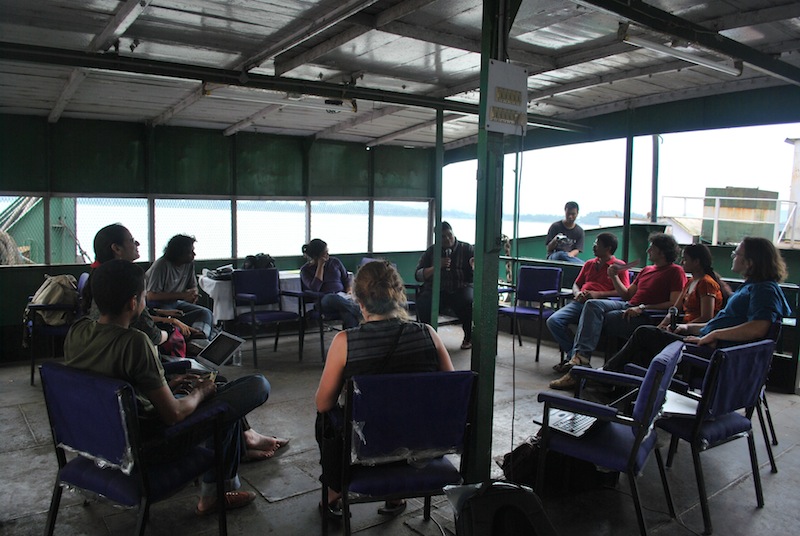
Periferry, Desire Machine Collective, 2007 b ongoing. Courtesy of Artists. .
The attempt of the project, Periferry, has been bto restore the ferry into a media lab using renewable energy sources and eco-friendly materialb.[29] It is also considered to be a turning point to look differently at the floating relations of inland water transport on the Brahmaputra, an important water channel connecting Tibet, China, India and Bangladesh.[30] The context of the project is largely situated in the ferry docked on the river b an bin betweenb space, where many places and experiences meet to open up a dialogue, produce collaborations, articulate resistances, precisely fuelling various kinds of public and private engagements.[31] .
Conclusion
In the discontinuous relationship with fluids and solids, the digital can be mapped both as a life-expanding and a life-threatening combination of forces. The practices of the digital take up the task of water diviners tracking fault lines, trapped fluids, seismic zones and even border matrices.
The logic of looking at the sea or other water bodies as conceptual sites of the social, where transformations can be mapped, realised and argued, is seen as the impulse of contemporaneity that the above-cited practices share. Baumanbs proposition of the fluid reorganisation of power and capital, flowing beyond the barriers and borders of the state is contested in Multiplicitybs thesis by pointing our attention to the solid passages that direct and govern the velocities of flows. In a world that is increasingly communicating through the digital, border devices are relocated to newer sites, where passwords and plug-ins appear as extended forms of control and surveillance. Yet, the free ports and trade of and on wooden dhows continues, not so affected by the changes of contemporary global capital; ferries get mobilised as Periferrys, for alternative artistic and philosophical imaginations. In a nutshell, all the fishes, all the ships, have different stories to tell, of being and belonging, and of politics and possibilities. .
.
Srinivas Aditya Mopidevi is currently a PhD scholar in Visual Studies at the School of Arts and Aesthetics, Jawaharlal Nehru University. He currently is also Asst. Curator to the Raqs Media Collective for their upcoming curation project titled INSERT2014. As part of bSarai Reader 09: The Exhibitionb (Devi Art Foundation, 2012), he initiated artbarricade.org, a web journal that dedicates itself to producing thinking on contemporary cultural practice.
[1] Ravi Sundaram. Referred to in Monica Narula, bSarai b One Year in the Public Domainb. In Television & New Media 3(4), pp. 404-412 (November 2002).
[2] In its strict technological definition, digital is understood to be a technological system that converts and produces different forms of information, images, audio and video into discrete and discontinuous data values.
[3] Zygmunt Bauman. bForeword: On Being Light and Liquidb. In Liquid Modernity (Polity, 2000, Cambridge), p. 6
[4] Ibid., p.13, 14.
[5] Reviews by Nicholas Gane on: bZygmunt Bauman: Liquid Modernity and Beyondb; bLiquid Modernity by Zygmunt Baumanb; bThe Individualized Society by Zygmunt Baumanb; bThe Bauman Reader by Zygmunt Baumanb. Acta Sociologica 44(3), pp. 267-275 (2001).
[6] This particular definition of territorial waters is made by the 1982B bUnited Nations Convention on the Law of the Seab. For an elaborate discussion on territorial waters, see Percy Thomas Fenn, bOrigins of the Theory of Territorial Watersb, The American Journal of International Law 20(3), pp. 465-482 (July 1926).
[7] Parul Dave Mukherji. bClassroom and the Plane of the Contemporaryb. In (ed.), Philip Monk, Raqs Media Collective: A Case Book (AGYU, forthcoming, Toronto).
[8] Irit Rogoff. bSmuggling: An Embodied Criticalityb. Available at: http://transform.eipcp.net/transversal/ 0806/ rogoff 1/en (last accessed 10 July 2012).
[9] Raqs Media Collective. The Great Bare Mat & Constellation, Gardner Museum, Boston, 2013. Available at: http://www.gardnermuseum.org/contemporary_art/exhibitions/past_exhibitions/great_bare_mat_and_constellation (last accessed 16 March 2013).
[10] Raqs Media Collective. The Knots that Bind are the Knots that Fray, Baltic Gateshead, New Castle, 2010. http://www.raqsmediacollective.net/resultCC.aspx?id=63&type=works (last accessed 12 April 2012).
[11] See http://www.installationart.net/Chapter3Interaction/interaction05.html (last accessed 16 March 2013).
[12] Multiplicity. The Ghost Ship, Documenta 11, Kassel, 2002. See http://www.multiplicity.it/index2.htm (last accessed 12 March 2013).
[13] Ibid.
[14] Ibid.
[15]Multiplicity. bID: A Journey through a Solid Seab. In Artists Writing/Project Proposals for Documenta 11, Documenta 11 Platform 5: Exhibition Catalogue (Hatze Cantz Publishers, 2002, Kassel), p. 577.
[16] Raqs Media Collective. Impostor in the Waiting Room, Bose Pacia Gallery, New York, 2004. Available at: http://www.raqsmediacollective.net/resultCC.aspx?id=92&type=works (last accessed 10 July 2012).
[17]Raqs Media Collective. bConcept Intruderb. In Raqs Media Collective: A Case Book, op. cit.
[18] Multiplicity. Border Matrix. Available at: http://www.multiplicity.it/index2.htm (last accessed 30 June 2012).
[19] This perception further directs our attention towards culverts, sluices and conduits b some of the very common solid channels and structures used to channelize different velocities of liquid flows.
[20] CAMP. Wharfage, a two-part project for the 9th Sharjah Biennial, 2009. Available at: http://camputer.org/event.php?id=77 (last accessed 16 March, 2013).
[21] Murtaza Vali. bCAMPbs Wharfage Project: Recasting the Indian Ocean as a Space of Contact and Exchangeb. In Art East, 1 November 2009. Available at: http://www.arteeast.org/pages/across_history/265/ (last accessed 20 May 2012).
[22] CAMP. Wharfage 2008-2009. This publication accompanied a series of radio broadcasts at the Sharjah Creek. From 18-21 March 2009, one could tune in to Radio Meena on 100.3 FM, within a radius of about two km from the port. The project was conceived as part of Past of Coming Days, a programme curated by Tarek Abou el Fetouh for the 9th Sharjah Biennial, 2009.
[23] Allan Sekula. bFish Story: Notes on Workb. In Artists Writing/Project Proposals for Documenta 11, op. cit., p. 582.
[24] Ibid.
[25] Ibid.
[26] Desire Machine Collective. bVisionb. In Periferry 1.0. B Available at: http://periferry.in/about_vision.html (last accessed 16 March, 2013).
[27] Desire Machine Collective. bSpacesb, In Periferry 1.0. Available at http://www.periferry.in /about/ about_ spaces. html (last accessed 12 March 2013).
[28] The river Brahmaputra, having a length of 891 km between the Bangladesh Border and Sadiya, was declared National Waterway No. 2 on 1 September 1988.
[29] Desire Machine Collective. bSpacesb, op. cit.
[30] Ibid.
[31] Desire Machine Collective. bVisionb, op. cit; bDesiring Machinesb, in Art India XVI (III), pp.40-43 (Quarter III, 2011-2012).

